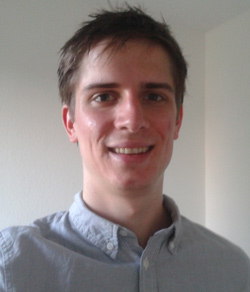| Jonathan Zopes | |||||||
|
Publications(up to 2018)
-
Fast, high-precision optical polarization synthesizer for ultracold-atom experiments, Phys. Rev. Applied 9, 034016 (2018)arXivBibTeX ABSTRACT »
ABSTRACT »We present a novel approach to precisely synthesize arbitrary polarization states of light with a high modulation bandwidth. Our approach consists in superimposing two laser light fields with the same wavelength, but with opposite circular polarizations, where the phase and amplitude of each light field are individually controlled. We find that the polarization-synthesized beam reaches a degree of polarization of 99.99%, which is mainly limited by static spatial variations of the polarization state over the beam profile. We also find that the depolarization caused by temporal fluctuations of the polarization state is about two orders of magnitude smaller. In a recent work, Robens et al. [Phys. Rev. Lett. 118, 065302 (2017)] demonstrated an application of the polarization synthesizer to create two independently controllable optical lattices, which trap atoms depending on their internal spin state. We here use ultracold atoms in polarization-synthesized optical lattices to give an independent, in situ demonstration of the performance of the polarization synthesizer.
-
Low-entropy states of neutral atoms in polarization-synthesized optical lattices, Phys. Rev. Lett. 118, 065302 (2017)arXivBibTeX ABSTRACT »
ABSTRACT »We create low-entropy states of neutral atoms by utilizing a conceptually new optical-lattice technique that relies on a high-precision, high-bandwidth synthesis of light polarization. Polarization-synthesized optical lattices provide two fully controllable optical lattice potentials, each of them confining only atoms in either one of the two long-lived hyperfine states. By employing one lattice as the storage register and the other one as the shift register, we provide a proof of concept using four atoms that selected regions of the periodic potential can be filled with one particle per site. We expect that our results can be scaled up to thousands of atoms by employing an atom-sorting algorithm with logarithmic complexity, which is enabled by polarization-synthesized optical lattices. Vibrational entropy is subsequently removed by sideband cooling methods. Our results pave the way for a bottom-up approach to creating ultralow-entropy states of a many-body system.
-
Sorting atoms in spin-dependent optical lattices, (2014), Master thesisBibTeX ABSTRACT »
ABSTRACT »This work reports on the implementation of feedback methods for position control of single Cesium atoms in spin-dependent optical lattices. For this purpose a new control software has been developed. It encapsulates experimental control, fluorescence image acquisition and analysis into a single program. Combining the new software with spin-dependent transport and position-dependent addressing, we have developed a versatile feedback algorithm to deterministically arrange arbitrary patterns of up to 6 atoms. In addition, we have prepared two atoms in a common lattice site. We observed light-assisted collisions between both atoms and thereby characterized the preparation effciency of 83 ± 4 %. The results pave the way for the study of controlled interactions between precisely two atoms in a single well of the optical lattice potential, enabling the realization of a fundamental quantum logic gate.
-
Einzelplatz-Detektion im optischen Gitter unterhalb des Beugungslimits, (2012), Bachelor thesisBibTeX
Research areas
Our group
Publications
Former research topics
Teaching
Further information
Login
Colloquia
- Curtius Lectures
- 03/05/22 - 06/05/22










